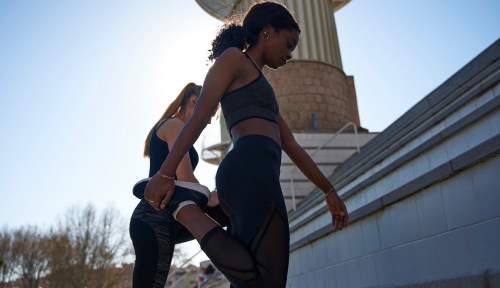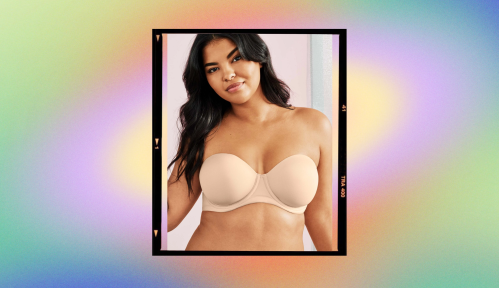Ever felt like your underwear is out to sabotage your workout? Whether it’s visible panty lines or an uncomfortable thong, the battle between comfort and practicality makes the idea of going commando sound a lot more appealing. Who needs a mid-squat wedgie, anyway? For many, ditching underwear entirely is a no-brainer, though the thought of going without might still raise an eyebrow or two. One of the biggest perks of skipping underwear is saving yourself from the endless laundry cycle. Personally, I’ve lost track of how often you’re supposed to change your underwear, but I got fed up with the constant need for clean underwear—one for the gym and another for everyday wear. All on the same day?
Experts in This Article
Amy Beckley, PhD, is an infertility specialist, CEO, and founder at Proov.
Director of the Center for Women’s Sexual Health and Medicine at Mt. Sinai Medical Center and head of SweetSpot Labs&rsquo
Deciding whether to wear underwear with your activewear can be confusing. With today’s advanced fabrics designed to keep you dry and comfortable, is an extra layer really necessary? Dr. Marisa Messore, an OBGYN in Miami and director of the Center for Women’s Sexual Health and Medicine at Mt. Sinai Medical Center, believes “whatever you feel comfortable wearing, it’s up to you.” Of course, that it’s also important to take into consideration the kind of fabric you’re wearing and your level of physical activity. Ahead, experts answer the age-old question, “Do you have to wear underwear with leggings?” and explain why going commando might be the better option, after all.
Are you supposed to wear underwear with leggings?
The short answer is: it depends. There’s no universal rule dictating whether one should or shouldn’t wear underwear with leggings. It’s largely a matter of personal preference, comfort, and individual health considerations. Dr. Messore, for one, doesn’t believe it’s necessary. “There really is no need to have two layers,” she says. “But, if you want to wear underwear with leggings for comfort and support, or if it helps to keep you cool, it is certainly an option.” Statistics on this preference are varied, with many women choosing to go without underwear due to comfort, while others prefer the added layer for support or hygiene reasons. According to a small survey by Cottonelle, about eight percent of women say they “always” go commando in yoga pants, while 25 percent admit to doing it “sometimes.”
Should you wear underwear with leggings when working out?
When it comes to exercise, the question of underwear becomes even more pertinent. Sweat, movement, and prolonged wear can all impact vaginal health during workouts. “Excessive sweating and body odor can be a concern, especially with workouts,” says Dr. Messore. While wearing underwear during a workout can absorb sweat and reduce odor, it can also lead to discomfort and chafing, she says.
“Depending on the materials, it could cause an inability to breathe, making it hotter and moister in the crotch area.” —Amy Beckley, PhD, scientist and CEO of Proov
Some specially designed workout leggings—like the OYA Femtech Apparel leggings or Knix leakproof leggings—come with built-in liners or moisture-wicking properties. In these cases, additional underwear may not be necessary. The key is to ensure that whatever you’re wearing next to your skin can effectively manage moisture and promote airflow. (We recommend gynecologist-approved underwear.)
Is it okay to not wear underwear with leggings?
From a hygiene and health perspective, wearing leggings with or without underwear can both be perfectly acceptable, says Dr. Messore. However, there are several factors to consider before you head to your next workout class sans underwear, according to experts.
Moisture and breathability
The material of your leggings plays a crucial role in determining whether it’s advisable to skip underwear. “Depending on the materials, it could cause an inability to breathe, making it hotter and moister in the crotch area,” says Amy Beckley, PhD, scientist and CEO of Proov. “But this depends on the activity level of the user, material of the leggings, and temperature of the environment.” Leggings made from synthetic fabrics like polyester might trap sweat and increase the risk of skin irritation. Natural fibers like cotton or moisture-wicking materials can help maintain a healthier, drier environment. Beckley says the key is to ensure your leggings are made of breathable material.
The same applies to choosing the right pair of underwear for a workout. One study1 found that ill-fitting thongs, moisture from sweat, and non-breathable fabric could create a favorable environment for infections. It also noted that non-cotton underwear could increase the risk of yeast infections, regardless of underwear style. Going commando might still trap sweat in tight leggings, but it avoids the rubbing of your anus and vagina with each movement.
Personal comfort
Many experts believe comfort should be a primary consideration. Some individuals may find that forgoing underwear reduces chafing and irritation, especially during physical activities. According to Bedbible, 18 percent of women prefer not to wear underwear during a workout. Athletes or those engaging in high-intensity workouts often prefer the freedom and reduced friction that comes with not wearing underwear. Conversely, some might feel more comfortable with the added layer of underwear, which can provide a sense of security and prevent accidental exposure, such as vaginal discharge leaving visible marks on clothes.
If underwear feels restrictive, going commando might offer more freedom during workouts or a refreshing breeze throughout your day. If you’re unsure, experts recommend trying it at home to see if it suits you.
Infection risks
Women with a history of recurrent vaginal infections or sensitivity may need to be more cautious about going commando in leggings. While Dr. Messore asserts that not wearing underwear does not inherently increase the risk of yeast infections or bacterial vaginosis, Beckley warns that prolonged use of unwashed leggings, particularly during times of increased cervical mucus (i.e., in your fertile window if you have a uterus), can lead to bacteria and fungi buildup. “Failing to wash the leggings between uses can lead to a higher chance of infection,” Beckley says.

Can not wearing underwear with leggings cause problems?
Not wearing underwear with leggings can cause myriad problems if you’re not careful. According to our experts, a few common issues include:
Chafing
While some might find going commando in leggings more comfortable, others may experience chafing due to direct contact between the fabric and skin, leading to irritation and potential micro-abrasions. This friction disrupts the skin barrier, triggering inflammation that leads to redness and discomfort. For those who find underwear restrictive or prefer a smoother feel, going commando can reduce friction and enhance comfort. Ensuring your leggings fit well and are made of smooth, high-quality materials designed to minimize rubbing can help mitigate this issue.
Feelings of confinement
Some may feel more comfortable and less confined with the extra layer of underwear. Dr. Messore suggests that those prone to excessive sweating might prefer wearing underwear to avoid wet spots. Others find that underwear adds an extra layer of restriction, making them feel more confined. Going without underwear can provide a sense of freedom, especially for individuals who prefer the natural feel of leggings against their skin. If the leggings are made of a stretchy, breathable fabric, this can enhance comfort and freedom.
Panty lines
Visible panty lines are a common concern when wearing leggings, leading many to opt for a no-underwear approach. Many modern leggings are designed to be forgiving of panty lines, and seamless or no-show options can mitigate this issue. For those who prioritize a sleek look without the interference of underwear lines, going commando may be the preferred choice. However, while this may solve the aesthetic issue, it’s important to prioritize vaginal health over appearance, advises Dr. Messore.
What happens if you don’t wear underwear with leggings?
Hygiene concerns
Whether you prefer to go commando or wear underwear with your leggings, maintaining your intimate hygiene is crucial. A 2017 review on female intimate hygiene2 highlights how essential personal care practices are for our health. The study reveals that daily gentle cleansing can help prevent vulvovaginal disorders by maintaining a healthy balance of bacteria, no matter your underwear choice. “It is important to wash the genital area [especially] after a workout,” says Dr. Messore. For those prone to ingrown hairs, acne, or folliculitis in the groin area, thorough cleaning and consulting a dermatologist might be necessary, she says.
Odor and sweat
Without the absorbent layer of underwear, sweat and odor may become more noticeable, especially during exercise. Damp clothing not only creates a perfect environment for fungal infections but can also result in unpleasant-smelling leggings. Regular washing and choosing breathable materials can help mitigate this issue, says Beckley.
Ultimately, the choice to wear underwear with leggings—or not—is a personal one. If you’re tired of the laundry cycle or feel restricted by traditional underwear, going commando might be worth a try. But make sure your leggings are up to the task. “Just remember yeast and bacteria thrive in a warm and moist environment,” board-certified OBGYN Dr. Sheryl Ross previously told Well+Good. “As long as your workout clothing has built-in panties or liners with special antibacterial fabric that can absorb the extra sweat, you should be fine leaving the undies at home.” The key is to choose what makes you feel most comfortable and confident.
- Hamlin, Alyssa A et al. “Brief versus Thong Hygiene in Obstetrics and Gynecology (B-THONG): A survey study.” The journal of obstetrics and gynaecology research vol. 45,6 (2019): 1190-1196. doi:10.1111/jog.13958↩︎
- Chen, Ying et al. “Role of female intimate hygiene in vulvovaginal health: Global hygiene practices and product usage.” Women’s health (London, England) vol. 13,3 (2017): 58-67. doi:10.1177/1745505717731011↩︎
Sign up for the Well+Good SHOP Newsletter
Get exclusive deals on wellness, beauty, fitness, and food products that have been hand-picked by our editors.
Got it, you've been added to our email list.











